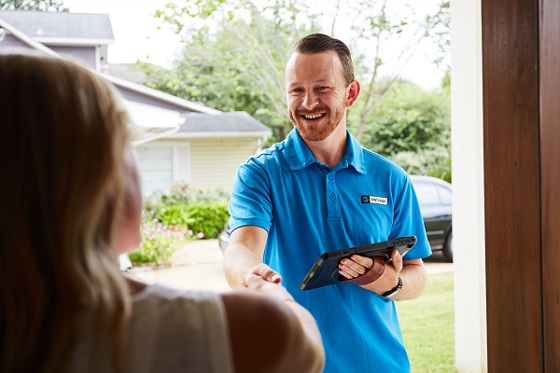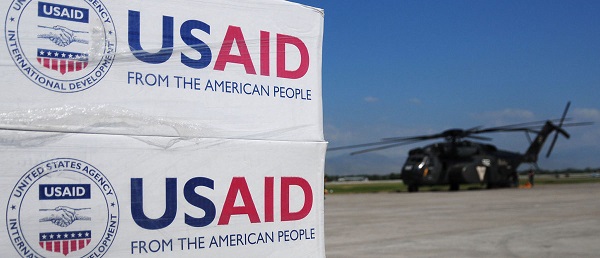Opinion
In 100+/- days we will vote for yesterday’s talk and ignore future’s needs.
At Large” versus “Ward” municipal governance.
In a 100 days or so, on October 16, 2017 there will be a municipal election and the citizens of Red Deer will vote for (1) mayor, (8) city councillors, (7) public school trustees, and (5) separate school trustees.
Red Deer uses the “At Large” system for voting so you have the option of voting for all positions mayor, councillors and school trustees either public or separate. 16 spots or 14 spots respectively.
The last election in 2013 we had 5 people running for mayor, 30 people running for council, 14 people running for public school board and 7 people run for the separate school board, 56 people in total.
How many people can remember all the candidates, anyone? Let us make it easier. How many people can remember , everyone who won, anybody?
The huge advantage of the current “At Large” system falls to and gives advantage to the incumbents (It looks like almost all the incumbents are running) and then to the more wealthier campaigns. The incumbents always have the advantage of name recognition and easier access to the media. Co-incidentally the incumbents had previously voted for and adopted a by-law limiting the number of signs candidates can post on one location.
It takes money to advertise to every household in the city, so naturally you will find that the wealthier candidates more often than not live in the wealthier neighbourhoods.
It is less expensive and easier for the city staff and management to deal with councillors, at large, in bulk than it would be to deal with the ward system and on individual basis. There is I have been told less infighting among councillors, perhaps because they have more in common, under the “at large” system than under the ward system. 7 of 8 current councillors live south of the river and east of Gaetz Avenue.
The advantage of the “Ward” system is that poorer neighbourhoods get equal representation. The citizens are closer to their elected officials and poorer candidates have smaller areas to cover. The city staff will have to refine their method of dealing with councillors in regards to neighbourhood issues.
There are pros and cons to both system, and we had a plebiscite on the issue during the 2013 municipal election. 71% voted to remain with the “At Large” system, feeling that Red Deer is still small enough to stay with this, the current system. The city council incumbents voted to budget $30,000 to inform the electorate of the issue, which was heavily in favor of the current system. They held an open house with a heavy leaning to the current system with just one local person, Larry Pimm, speaking, a popular former councillor, known for and speaking for the “At Large” system.
I believe that by looking at the city today, the current system has systematically and historically failed one third of our city.
One third of our city lives north of the river and they are currently represented by 1 person out of 9 at city hall. Out of 7 indoor ice rinks and 4 aquatic centres in Red Deer, they have 1 north of the river and the latest buildings are being built or planned south of the river. When it comes to school boards, the city has, is building and planning 6 high schools, all on the south side and 5 high schools are “unbelievably” along 30 Avenue.
On the north side of the river we have (1)the Dawe Centre, built in the 70s, and there are no plans to build a new recreation centre, including a swimming pool on the north side.
On the south side we have; (10), the Downtown Recreation Centre, Michener Aquatic Centre, Downtown Arena, Centrium complex, Collicutt Recreation Centre, Pidherney Curling Centre, Kinex Arena, Kinsmen Community Arenas, Red Deer Curling Centre, and the under-construction Gary W. Harris Centre. The city is also talking about replacing the downtown recreation centre with an expanded 50m pool.
Let us get back to voting. In 2013 we had 56 candidates for 21 spots and naturally most incumbents who ran, won. How can anyone know and understand the positions of 56 candidates. Many would like one or 2 newcomers, vote for them and fill the rest with known incumbents. They are sabotaging the chances of newcomers by voting and electing their own opposition.
I have been advocating for 4 wards within city limits. Each ward would have 25% of the population, give or take 5%. 100,000 residents would mean that each ward would have between 23,750 and 26,250 and the boundaries would change with the population growth.
Each ward would elect 2 councillors, perhaps the school boards would adopt the ward system, so the public school board could for example. have 2 trustees from each ward, and the mayor would be elected city wide.
Using the 2013 ballot, you would elect 1 mayor out of 5 candidates, you would elect 2 councillors out of 7 or 8 depending on the ward and the public school voters would elect 2 trustees out of 3 or 4 candidates, again, depending on the ward.
Perhaps under the ward system, with representation at the table, using my previous arguments, the residents living north of the river will actually get a new indoor ice rink, swimming pool and perhaps (dare I dream),their own high school. One can only dream.
The incumbents will say no to the ward system, stating the small size of Red Deer, omitting the fact that most incumbents are relying on their constituency of voters that are spread across the city and their constituency of voters may not be strong enough in only one ward.
Lately, there has been some voices out of city hall, demanding to be recognized as a big city and to be included in the “Big City Charter” and the extra money and power associated with it. Incidentally the cities covered by the big city charter currently use the “ward” system.
Should we hold another plebiscite, asking that our councillors represent their neighbours, should we ask that school board trustees represent the neighbourhood families, should we take the step to recognize that Red Deer is now a big city and not that small town anymore, and prepare for and govern like a big city. I am arguing that our city is big enough but it is actually shrinking, while the city is arguing it is still a small town while demanding recognition as a growing city.
2017 may see a few candidates run against the incumbent mayor but we may see in excess of 30 candidates run for city council and in excess of 20 candidates running for one of the 2 school boards’ trustee positions. Under the current system we will again see governing concentrating their attention in the same areas like downtown or the east hill. We will continue to ignore the needs of residents living in neighbourhoods like those north of the river.
“At Large” is an ideal that fails when reality is involved, the “Ward” system is a flawed ideal that may best represent our reality. What would do you think? It is your home.
Keep in mind that under the “AT Large” voting system the constituency comprising of on-average one-third of our residents, living north of the river decreased by 777, while the constituency comprising on-average two-thirds of our residents living south of the river only decreased by 198, last year.
Is this the proof that we may need the “Ward System”? Just asking for some serious discussion. Thank you.
Business
Mark Carney’s Fiscal Fantasy Will Bankrupt Canada

By Gwyn Morgan
Mark Carney was supposed to be the adult in the room. After nearly a decade of runaway spending under Justin Trudeau, the former central banker was presented to Canadians as a steady hand – someone who could responsibly manage the economy and restore fiscal discipline.
Instead, Carney has taken Trudeau’s recklessness and dialled it up. His government’s recently released spending plan shows an increase of 8.5 percent this fiscal year to $437.8 billion. Add in “non-budgetary spending” such as EI payouts, plus at least $49 billion just to service the burgeoning national debt and total spending in Carney’s first year in office will hit $554.5 billion.
Even if tax revenues were to remain level with last year – and they almost certainly won’t given the tariff wars ravaging Canadian industry – we are hurtling toward a deficit that could easily exceed 3 percent of GDP, and thus dwarf our meagre annual economic growth. It will only get worse. The Parliamentary Budget Officer estimates debt interest alone will consume $70 billion annually by 2029. Fitch Ratings recently warned of Canada’s “rapid and steep fiscal deterioration”, noting that if the Liberal program is implemented total federal, provincial and local debt would rise to 90 percent of GDP.
This was already a fiscal powder keg. But then Carney casually tossed in a lit match. At June’s NATO summit, he pledged to raise defence spending to 2 percent of GDP this fiscal year – to roughly $62 billion. Days later, he stunned even his own caucus by promising to match NATO’s new 5 percent target. If he and his Liberal colleagues follow through, Canada’s defence spending will balloon to the current annual equivalent of $155 billion per year. There is no plan to pay for this. It will all go on the national credit card.
This is not “responsible government.” It is economic madness.
And it’s happening amid broader economic decline. Business investment per worker – a key driver of productivity and living standards – has been shrinking since 2015. The C.D. Howe Institute warns that Canadian workers are increasingly “underequipped compared to their peers abroad,” making us less competitive and less prosperous.
The problem isn’t a lack of money; it’s a lack of discipline and vision. We’ve created a business climate that punishes investment: high taxes, sluggish regulatory processes, and politically motivated uncertainty. Carney has done nothing to reverse this. If anything, he’s making the situation worse.
Recall the 2008 global financial meltdown. Carney loves to highlight his role as Bank of Canada Governor during that time but the true credit for steering the country through the crisis belongs to then-prime minister Stephen Harper and his finance minister, Jim Flaherty. Facing the pressures of a minority Parliament, they made the tough decisions that safeguarded Canada’s fiscal foundation. Their disciplined governance is something Carney would do well to emulate.
Instead, he’s tearing down that legacy. His recent $4.3 billion aid pledge to Ukraine, made without parliamentary approval, exemplifies his careless approach. And his self-proclaimed image as the experienced technocrat who could go eyeball-to-eyeball against Trump is starting to crack. Instead of respecting Carney, Trump is almost toying with him, announcing in June, for example that the U.S. would pull out of the much-ballyhooed bilateral trade talks launched at the G7 Summit less than two weeks earlier.
Ordinary Canadians will foot the bill for Carney’s fiscal mess. The dollar has weakened. Young Canadians – already priced out of the housing market – will inherit a mountain of debt. This is not stewardship. It’s generational theft.
Some still believe Carney will pivot – that he will eventually govern sensibly. But nothing in his actions supports that hope. A leader serious about economic renewal would cancel wasteful Trudeau-era programs, streamline approvals for energy and resource projects, and offer incentives for capital investment. Instead, we’re getting more borrowing and ideological showmanship.
It’s no longer credible to say Carney is better than Trudeau. He’s worse. Trudeau at least pretended deficits were temporary. Carney has made them permanent – and more dangerous.
This is a betrayal of the fiscal stability Canadians were promised. If we care about our credit rating, our standard of living, or the future we are leaving our children, we must change course.
That begins by removing a government unwilling – or unable – to do the job.
Canada once set an economic example for others. Those days are gone. The warning signs – soaring debt, declining productivity, and diminished global standing – are everywhere. Carney’s defenders may still hope he can grow into the job. Canada cannot afford to wait and find out.
The original, full-length version of this article was recently published in C2C Journal.
Gwyn Morgan is a retired business leader who was a director of five global corporations.
Opinion
Charity Campaigns vs. Charity Donations

Over the past few years, I’ve had canvassers coming to my home in Toronto on behalf of a wide range of non-profits – including hospitals and mental health and homeless support organizations. The fundraisers all “wear” a noticeable post secondary student vibe. That’s hardly news.
But curiously, no matter what they’re collecting for, every last one of them uses the exact same methodology. That is, they refuse to take a one-time donation, instead insisting I sign up for six (not seven, and definitely not five) monthly payments. They don’t want me donating online through the organization’s website (explaining that they wouldn’t get credit for that). They do expect me to enter my basic information on a high-end tablet they’re carrying. When that’s done, they’ll use their smartphones to make a call to a remote agent who would take my financial information.
I only completed the process once – for the Hospital for Sick Children (SickKids) in Toronto. But that was mostly because, at the time, they were in the middle of quite literally saving my granddaughter’s life. I couldn’t very well say no.
Because of the paranoia that comes with my background in IT systems administration, I generally don’t participate, explaining that I never share financial information on a call I didn’t initiate. At the same time, these campaigns are not fraudulent and, with the possible exception of UNICEF, they all represent legitimate organizations. Nevertheless, they all come with the clear fingerprints of a third-party, for-profit company. Which makes me curious.
After a little digging, it became clear that a company called Globalfaces Direct was the most likely employer of the face-to-face (F2F) canvassers I’m seeing. It’s also obvious that those canvassers are paid at least partially through revenue-based commissions.
Estimating how much of your donations are actually used for charitable work can be difficult. For once thing, in the case of SickKids, it’s not even clear which organization the money is going to. There at least three related non-profit accounts registered with CRA: The Hospital for Sick Children, The Hospital for Sick Children Foundation, and the SickKids Charitable Giving Fund.
But even where there isn’t such ambiguity we have only limited visibility into an organization’s finances. Covenant House, for instance, issued receipts for $26 million in donations for 2024, but there’s no way to know how much of that came through Globalfaces Direct F2F campaigns. And there’s certainly no public record indicating how much of that $26 million was spent on commissions and overhead. CRA filings for Covenant House do report fundraising costs of $9.4 million in 2024, which was 22 percent of their total spending and 32 percent of all donations.
It’s likely that their $9.4 million in fundraising costs includes Globalfaces Direct’s canvasser commissions and overhead costs. But those are only some of the costs – which likely include events, direct mail, and other in-house efforts. In fact, it’s not unreasonable to assume that only 20-30 percent of each dollar raised through F2F canvassing is actually spent on charity work.
From the perspective of the non-profit, hiring F2F companies can generate new sources of stable, long-term income that would have been otherwise unattainable. Especially if the F2F agreement specifies withholding a percentage of what’s collected rather than charging a flat fee, then a non-profit has nothing to lose. Why wouldn’t SickKids or Covenant House sign up for that?
Of course, a lot of that will depend on how you think about the numbers. Taken as a whole, an organization that spends just 32 percent of their donations on fundraising activities is well within CRA guidelines: “Fundraising is acceptable unless it is a purpose of the charity (a collateral non-charitable purpose).” But if we just looked at the money raised through a F2F campaign, that percentage would likely be a lot higher.
Similarly, CRA also expects that: “Fundraising is acceptable unless it delivers a more than incidental private benefit.” In other words, if a private company like Globalfaces Direct were to realize financial gain that’s “more than incidental”, it might fail to meet CRA guidelines.
Unfortunately, there’s no easy way for donors to assess the numbers on those terms. So regular people who prefer to direct as much of their donation as possible to the actual cause will generally be far better off donating through an institution’s website or, even better, through a single CRA-friendly aggregator like CanadaHelps.org.
But it would be nice if CRA reporting rules clearly broke those numbers down so we could judge for ourselves.
-

 Fraser Institute1 day ago
Fraser Institute1 day agoBefore Trudeau average annual immigration was 617,800. Under Trudeau number skyrocketted to 1.4 million annually
-

 MAiD1 day ago
MAiD1 day agoCanada’s euthanasia regime is already killing the disabled. It’s about to get worse
-

 Frontier Centre for Public Policy1 day ago
Frontier Centre for Public Policy1 day agoNew Book Warns The Decline In Marriage Comes At A High Cost
-

 Business1 day ago
Business1 day agoPrime minister can make good on campaign promise by reforming Canada Health Act
-

 Addictions1 day ago
Addictions1 day ago‘Over and over until they die’: Drug crisis pushes first responders to the brink
-

 International1 day ago
International1 day agoChicago suburb purchases childhood home of Pope Leo XIV
-

 Daily Caller1 day ago
Daily Caller1 day agoUSAID Quietly Sent Thousands Of Viruses To Chinese Military-Linked Biolab
-

 Business2 days ago
Business2 days ago103 Conflicts and Counting Unprecedented Ethics Web of Prime Minister Mark Carney




